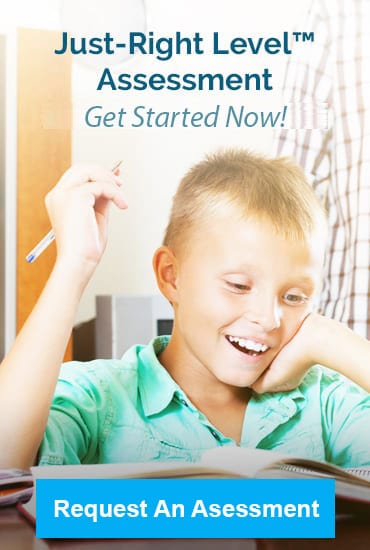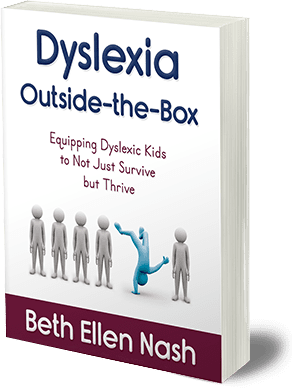Reading Fluency Strategies

Even after dyslexic students have done extensive, explicit work to build their phonics skills, most still need additional targeted work to build up their reading fluency strategies and skills. They are able to read, but it is painfully slow for the level at which they should be. It is not uncommon for a dyslexic middle school student to have a silent reading rate of a first or second grader. Some approaches that parents and tutors can use to help improve fluency include:
- Employing the “five fingers down” reading fluency strategy to select an appropriate level book. When the student is reading, they put a finger down for each word they either don’t know or have difficulty sounding out. If they put five fingers down before they reach the end of the page, that book is too challenging for fluency practice. There is a time for stretching students to learn new reading skills and tackle more complex text, but it should not be while trying to work on building fluency or enjoyment of reading.
- Engaging student interest. It’s important to keep struggling readers engrossed. Reading about topics that they want to learn about or already have background knowledge in can provide context and vocabulary support.
- Making sure the author’s style fits the student. Usually within about two to four pages the student knows whether or not they like the author’s style. When reading academic content there may be no choice, but when working specifically to develop reading fluency, do not force them to read a style or content that turns them off.
Additional reading fluency strategies suggestions include:
- Reading the material aloud to the student before they read it themselves
- Providing a summary or overview of a long passage so they have an idea of what’s coming and can tie it into their background knowledge
- Previewing vocabulary for them if there are names of places, people, or other vocabulary words they may not know
One goal of reading fluency practice is to build quick and accurate sight-word recognition. Using a variety of the following types of reading fluency strategies into short practice sessions works the best with most dyslexic students:
- Have the student listen to a quality model of the passage being read aloud. Then have them read the passage at least two or three times themselves. The goal is to become more fluent each time they read.
- Have the student read along with quality audio or a fluent reader to gain experience with the prosody (the rhythm and musicality) of the language. The audio provides confidence-building support for words they are unsure of.
- Sight-word flashcards build sight-word recognition. Flashcards can be creatively incorporated into games, puzzles, or other activities to make the practice more enjoyable.
- Clay modeling: The Davis Symbol Mastery suggested by the Davis Dyslexia Correction approach helps build sight-word recognition specifically for words that frequently confuse the dyslexic student. (This article explains the Davis method in more detail).
- The Davis Sweep-Sweep-Spell reading fluency strategy has the student cover up all but the single word that they’re about to read. One by one they uncover each word as they read. If they still cannot read a word, they spell it one letter at a time. If they still don’t get it, the adult who’s reading with them immediately feeds them the word. This builds recognition of the letters of the word from left to right as they come in sequence. This kind of practice should only be done for five to ten minutes at a time. Use text at a level at which the student knows at least 90 percent of the words when working to build up their sight-word recognition.
Resources for Developing Reading Fluency
At Wings to Soar Online Academy we use Reading Plus® and Dyslexia Gold: Fluency Builder® to help build reading fluency. Reading Plus more specifically includes iBalance exercises to improve efficiency of eye movements, which effectively helps students who have either completed vision therapy or who have only minor visual-tracking issues. Reading Plus works equally well for dyslexics and others who have learned the foundational phonics skills but are just reading slowly and/or having difficulty with comprehension. Fluency Builder helps fill in phonetic skill gaps, as well as build fluency. Resources for building sight words, which helps build fluency, include:
- The Nessy™ online reading and spelling program, which incorporates fun animations with mnemonics, helps some students remember sight words. (This is one of the programs we often use at Wings to Soar.)
- Diane Craft’s Right Brain Dolch Sight Word Cards, Lone Star Learning®, and SnapWords®, which all have visual sight-word cards, can help some students read with greater automaticity and can be an important reading fluency strategy. You can also encourage the student to create their own such cards.
- This article shares more than 75 multisensory practice ideas that while focused on building spelling skills, also increase automaticity in word recognition, which increases fluency.
A resource for supported, repeated reading is the RAZ Plus® program we use for many students at Wings to Soar, which provides structured, repeated reading for different purposes including reading along with audio that models fluent reading (at an appropriate pace for the level), and reading independently and then recording themselves reading the passage aloud.
See Slow Reading Speed and Reading Fluency Interventions articles.


